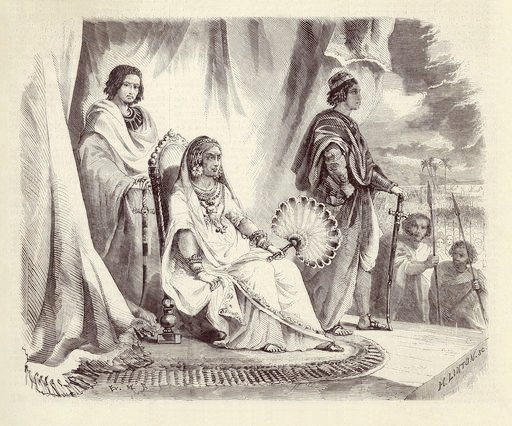World Building Wednesday: A series of short posts in which I write about my personal theory of how I approach world building, specifics of things to consider, and practical suggestions on how to use world building in the text. This is not a prescriptive program. I don’t think people must do things the way I do. I talk about my process because it is what I know. That’s it. Short bites: long tail.
This week I have a 9000 word essay going up on Tor.com, so I’m linking to it as my world-building Wednesday post on the principle that 9000 words is a novelette and thus equals 2 or 3 or even 4 posts.
Here’s the introduction:
The cold equations of “realism,” some claim, suggest there is little scope for women taking an active and interesting role in epic stories set in fantasy worlds based in a pre-modern era. Women’s lives in the past were limited, constrained, and passive, they say. To include multiple female characters in dynamic roles is to be in thrall to quotas, anachronisms, Political Correctness, and the sad spectacle and dread hyenas of wish-fulfillment.
Is this true?
Let’s leave aside the argument that, in fantasy, if you’re going to include dragons you can also plausibly include women in a range of roles. That’s absolutely correct, although it veers uncomfortably close to equating women’s presence in epic narrative to that of mythical creatures. As an argument to include women it’s not even necessary.
Of course there are already many fascinating and memorable female characters in epic fantasy, with more being added every year. So, yes, write women—write people—however you want, with no limits and constraints.
More importantly, any cursory reading of scholarship published in the last fifty years uncovers a plethora of evidence revealing the complexity and diversity of women’s lives in past eras and across geographical and cultural regions.
I’m not suggesting the legal and political situation of women has been universally equal to that of men across world history, much less equivalent in every culture. And this essay is not meant to represent a comprehensive examination of women’s lives (or what it means to be called a woman) in the past, present, or cross-culturally. Far from it: This represents the merest fractional fragment of a starting point.
My goal is to crack open a few windows onto the incredible variety of lives lived in the past. How can women characters fit in epic fantasy settings based on a quasi-historical past? How can their stories believably and interestingly intersect with and/or be part of a large canvas? You can model actual lives women lived, not tired clichés.
Here, mostly pulled at random out of books I have on my shelves, are examples that can inspire any writer to think about how women can be realistically portrayed in fantasy novels. One needn’t imitate these particular examples lock-step but rather see them as stepping stones into many different roles, large and small, that any character (of whatever gender) can play in a story.
You will find the rest at Tor.com.
#
Next week: An introduction to tropes, by guest author Juliet E. McKenna.
Previously: Introduction, The Flowering of an Image, Inductive to Deductive, Image to Idea: A Practical Idea, Deductive or Inductive: A Guest Perspective (Aliette de Bodard), The Map as Theory, Geography is Destiny, The Big Narratives Stand Atop Those Lives, Writing Outside Your Own Experience, Narrative Maps


